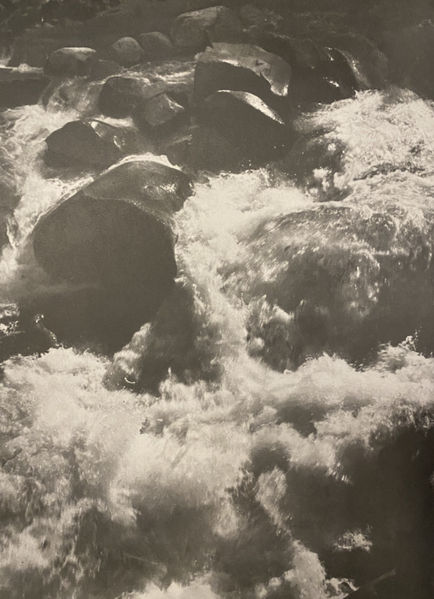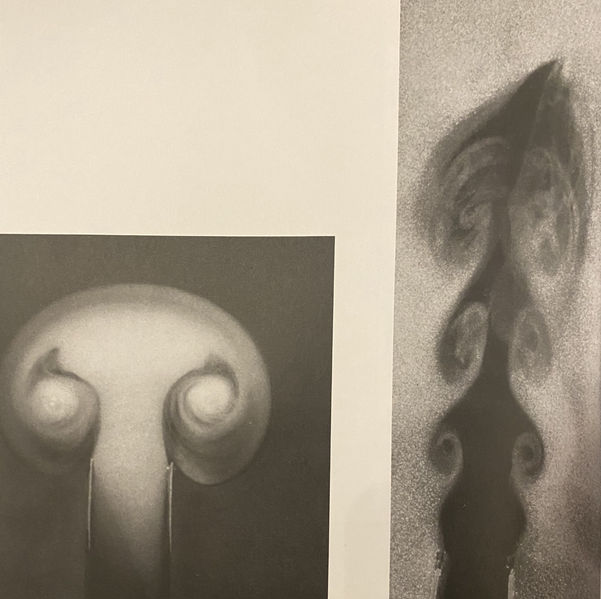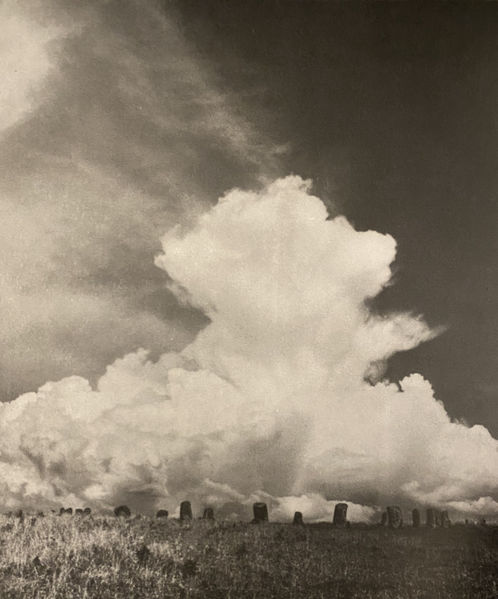STUDIO FILE
With this collection being my final studio file, I want it to be a conclusive study of the artistry that has influenced my practice.
In my previous studio file, I conducted an extensive study into five different elements of artist technicality, these being:
line, tone, colour & light, composition, gesture & movement.
This study into specific aspects of hundreds of different practitioners was massively influential in informing my own technical skills, and refining my direction in my practice.
This final studio file will differ from its predecessor as my research has shifted from a technical study of artistry and draftsmanship to an observational study of the ‘experience’ suggested to the viewer, and the emotional implications behind the work. With this in mind, my research is comprised of a ‘metaphysical’ approach to artistry, literature and film. Exploring perception through the lens of an individual. By researching alternative creative endeavors across screen and literature, I have crafted a unique narrative as the backbone of my work.
ARTIST RESEARCH

ZDZISŁAW BEKSIŃSKI
'Dystopian Surrealism
Post war Polish Artist Beksinski depicted surreal worlds of both dreams and nightmares in his photography and paintings, usually featuring disfigured and distorted humanoid figures. His work through the eyes of the viewer hold a strong sense of symbolism surrounding post war life in Poland. Beksinski’s training in architecture allowed him to manipulate famous structures and make powerful social commentaries. Though Beksinski’s paintings depict vivid narratives through motifs and symbolism such as nihilism, spiritualism, eroticism and war the artist claimed that “meaning is meaningless to me” as he chose to not title any of his works to avoid any preconceived notions.
“If I had something to say I would write it down or say it, I don’t need painting for that”
Beksiński’s philosophy towards his art impacted the perception of my own. I concluded that I wanted my work to be as open ended as possible, telling a visual story that holds ambiguity to the viewer. I think this approach to my work can be best described as ‘setting the scene without turning the page’, coaxing the viewer into creating their own world from the work.

LUDWIG MEIDNER
Meidner’s expressionist and chaotic landscapes acted as a great reference for my practice. I was inspired by Meidner’s ability to express such a feeling of chaos whilst juxtaposed with rhythmic compositions where each component flows into one another in harmonious synchronicity. I think Meidner’s graphic approach to painting creates an excellent amalgamation of the figurative and the abstract, I hope to incorporate this approach into my own works.
WILLIAM BLAKE
I was inspired in particular by the piece ‘The Ancient of Days’, by Blake. The symbolism within the composition inspired my own. In particular elements spirituality within my series ‘Sensitive Chaos'.


JONATHAN HOULDING
I was recommended this piece of Houlding’s by a tutor, as they drew similarities between our artistic style, Houlding depicted complexly layered compositions that come together harmoniously, to create one image. I was inspired by Houlding's approach to drawing and was motivated to maintain a similar mentality in my own work, one that didn't fear over working the piece, allowing an initial idea to transform
SIMON EDMONSON
British painter Edmonson depicts a duality of the figurative and the abstracted within masterfully executed compositions. Each composite element of his paintings suggest dream-like settings as brush marks are boldly unapologetic in their sense of looseness, yet concise and informative when suggesting form.
The variation of tone and chroma between elements of the composition tell a vivid story within the work, a sense of light is so exquisitely portrayed, giving an impressionistic style with underlying suggestions of realism.
“Edmondson investigates the dual nature of our existence: presence and absence, good and evil. But he makes no judgment, and specific meaning is reserved.”

PAREIDOLIA
Rorschach's Blot Test
I expanded my research outside of the artistic circle to studies of science and psychology. My practice was influenced by Rorschach’s blot test. An experiment requiring the individual to interpret ink blots, asking them to give a figurative answer ( a face, a butterfly etc). This test plays on the psychological phenomena of ‘pareidolia’, the definition of pareidolia is; “the imagined perception of a pattern or meaning where it does not actually exist”
It is this requirement of the viewer to interpret their own narrative within a piece of art that inspired my approach to my work. I wanted to make work that told a personalised story- which was relative to an individual. I pursued this ambition with the maintaining of figurative elements within abstracted compositions. With pareidolia becoming a key theme within my work I drew a lot from imagination. Implementing surrealist techniques such as ‘automatic drawings’ to influence my creative process. This allowed my work to loosen up as the marks became more spontaneous and fluent.

ALEXANDER COZENS
'Mr Blot'
I discovered Alexander Cozens when researching into the artistic application of pareidolia. Cozens, an eighteenth-century British landscape painter implemented a painting technique that utilised pareidolia to create imaginative compositions. Cozens would randomly blot paper with ink, he titled this technique ‘blot drawings’, stating their purpose was to “unlock the imagination by suggesting random shapes and forms.”
Drawing inspiration from pareidolia has been a key element of artist practice for centuries, the phenomenon can be found everywhere. In the first year of my degree I started drawing inspiration from wood grain patterns and textures in limestone. It is only from my recent research that I discovered Leonardo Da Vinci wrote in his notebook that “artists might find ideas for compositions in wood grain or stains on the wall”

AUTOMATIC DRAWING
Surrealist automatism is a method of art-making in which the artist suppresses conscious control over the making process, allowing the unconscious mind to have great sway.
“Taking your minds eye to a place that normally is unexplored” Tim Gula
“When your mind is relaxed, it’s the most creative”- Moebius
FILM
INGMAR BERGMAN
Bergman Seventh Seal
Questioning the meaning of life through the lens of the metaphysical: Bergman gives an introspective outlook on themes of modern existentialism, challenging the unavoidable compromise of life and death, depicted through metaphoric imagery. For example- a game of chess between a personified death and a knight. The film inspires creativity. Not only through powerful symbolism and provoking metaphors but also outstanding cinematography. As an artist who works in predominantly grey scale mediums- the black and white film provides fantastic drawing references. Thanks for the film recommendation John!


ANDREI TARKOVSKY
The Sacrifice
Andrei Tarkovsky’s ‘The Sacrifice’ has inspired a new approach to the composition of my drawings. Tarkovsky implements a unique style of cinematography within the film, his use of long shots impose a sense of isolation, as the figures in the frame are marginally too far away to identify. Maintaining their anonymity to the viewer. Tarkovsky is giving us time to contemplate our own narrative. I found this caused me to consider the space between the elements of the composition, and the stories that balancing the space can tell.
LITERATURE

THEODOR SCHWENK
Sensitive Chaos
A key influence within my studio practice was a book recommend to me by my tutor Richard, titled ‘Sensitive Chaos’. This book is a study into the scientific and spiritual nature of water and in turn all organic life forms.
‘Everywhere liquids move in rhythms. Countless rhythms run through the process of nature. Not only are the great currents and tides of the oceans subject to the rhythms of the seasons; every lake, every pond, every well with its ground-water level has its movements that fluctuate with high and low tide or according to other laws.’
The diagrams featured in this book inspired me to research organic forms. I was particularly interested in life forms that interacted with water or air to move.
It was the calculated fluency of these forms that informed my drawing, for example referencing the spiral of a shell, and the fins of fish.
I was particularly intrigued by an illustration featured in the book, of a sequence of movements a sting ray undertakes to push through water. The drawing highlights how the shape of the stingray’s fins imitate the movement of the water and propel it forwards.
Organic life forms reflecting harmony
of the air/water currents around it to achieve movement captivated my imagination
It was this concept that inspired my compositions, as I tried to capture the harmonious similarities between the subject matter and the rhythms that surround it, adding a sense of fluency to my work.
‘And do we not see this flowing movement- in rhythmic sequence- even in the great variety of movements of human limbs?’

MICHAEL DYLAN FOSTER
The Book Of Yōkai
A key inspiration in my practice is the artistic culture of ancient Asian religions and mythologies. ‘The book of Yokāi’ was a fantastic literary reference as the stories of Yokāi acted as a starting point to my drawings, even though my drawings often didn’t resemble to original story told, it was this that opened my mind to a unique thought that developed as it combined with other inspirations and ideas.
The term ‘yōkai’ translates roughly to ‘supernatural phenomena’, meaning the term is used to describe things we can’t explain using logic and/or reason.
Within folklore, the Japanese have always found a unique way of personifying the supernatural, and giving life to a new meaning. A piece of text I kept returning too was an Edo period passage on the Yokai 'Raiju', or 'Thunder Beast' in English.
"The raiju is said to come down to earth with a lighting bolt during a thunder storm"...
"The sky [...] though always present and visible, was simply not accessible. It was a place of imagination, where other worlds and mysterious phenomena were always possible."
I love the way Yokāi are constantly changing and evolving to match the feeling of the culture, it’s as if these creatures reflect the state of mind of its people. I felt inspired to tell a story that is constantly changing based on the viewers perception. This idea of a changing narrative coincided with a drawing from my series ‘sensitive chaos’- my tutor and I noticed when you flip the orientation of the drawing the narrative changes entirely; from soft transitory skyscape, to a dense landscape.
The presence of the unknown is a theme that I worked into my compositions as a means to add a sense of depth.
A SENSE OF PLACE
KENNIN-JI TEMPLE
Kyoto
After sharing a conversation in the studio about Japanese culture with my tutor Mark who recently visited Japan, he recommended I researched the Kennin-ji Temple in Kyoto. The Zen Buddhist temple is decorated with a variety of murals depicting different deities.
I drew inspiration from the awesome mural that decorates the ceiling of the Kennin-ji Temple. The mural depicts two black dragons intertwining among the clouds. I have been told by Mark who had visited temple that the dragons have a life of their own a truly feel real in their own right. The study of this temple was a key point of reference when creating my final realisation 'The Dragon And Tiger', I wanted to capture a likeness of the marks used in the mural to reflect the temple and add a sense of place to the piece.


UTAGAWA KUNIYOSHI- DRAGON AND TIGER (RYÛKO) 1837
I used this master painting as a point of reference in my final piece. By reinterpreting Kuniyoshi's work in my own style I felt It gave a sense of place. To pay homage to the Edo period master, I directly quoted the title of the original piece. I felt I was able to capture the historical context of the piece and portray a new interpretation of with my own unique style of mark making.


















